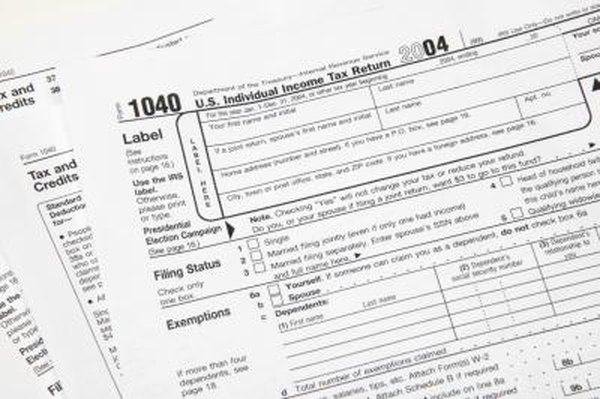Covered vs. Noncovered Stock Transactions
Your broker will report to you the cost basis of sold covered shares.
Creatas/Creatas/Getty Images
A broker must report to you and the Internal Revenue Service all taxable sales of stock for the year, so that the IRS can assess capital gains taxes. Brokers report this information on IRS Form 1099-B, Proceeds From Broker and Barter Exchange Transactions. If the stock is “covered,” the form will report the cost basis. Covered shares are generally ones you purchased after 2010.
Cost Basis
The cost basis of a stock you sell is the price you paid for the shares plus any commissions or fees. A capital gain occurs if your sales proceeds exceed the cost basis of the shares. Every time you buy shares, you create a new tax lot that records the number of shares, the transaction date, and the cost basis. You can specifically identify which tax lots to include in the sale of shares; otherwise, your broker will dispose of your tax lots on a first-in, first-out, or FIFO, basis. The benefit of specific identification is that you can sell the lots with the highest bases ahead of lower-cost lots, thereby minimizing the amount you’ll pay in capital gains tax. Lots you hold for over a year qualify for the lower long-term capital gains rate, so you normally would sell these shares first.
Specified Securities
As of 2011, the IRS requires brokers to report the cost basis of most stock sales on Form 1099-B. A covered security is one whose sale requires disclosure of the cost basis. Certain "specified securities" are covered. These include stock shares and American Depository Receipts issued by corporations that you acquired for cash in an account after 2010. If the shares transfer into a new brokerage account, the broker considers them covered if the transfer statement so states. Shares of mutual funds became covered securities beginning in 2012. Brokers need not report the cost basis for noncovered security sales.
Corporate Actions
The IRS considers securities to be noncovered if you receive them via a corporate action and their cost bases derive from noncovered securities. Corporate actions include events such as stock dividends, stock splits, stock conversions, redemptions and corporate reorganizations. For example, if you purchased stock in 2010 that split two-for-one in 2012, the new shares are noncovered because they derive from shares that were noncovered.
Foreigners
Treasury Regulation 1.6045-1 exempts brokers from issuing Form 1099-B for persons reliably documented as being foreign. The rule classifies a foreigner to be someone who is not present in the United States for at least 183 days of the calendar year. Stock sold by a foreigner is noncovered. Additonally, Treasury Regulation 1.6049-5 exempts stock sales by foreign intermediaries, such as banks, and foreign flow-through entities, which are organizations that pass tax obligations through to its shareholders. These stocks are also noncovered.
Dividend Reinvestment Plans
A dividend reinvestment plan, or DRIP, allows you to reinvest automatically your stock dividends in additional shares. A stock is noncovered if you bought it in 2011 and in the same year transferred it to a DRIP that uses the average basis method instead of FIFO. If you transfer a covered security into a DRIP after 2011, it remains covered. The IRS defines a transfer in this context as a non-DRIP that amends its plan documents to become a DRIP. The effective date of the amendment is the transfer date.
References
Resources
Writer Bio
Eric Bank is a senior business, finance and real estate writer, freelancing since 2002. He has written thousands of articles about business, finance, insurance, real estate, investing, annuities, taxes, credit repair, accounting and student loans. Eric writes articles, blogs and SEO-friendly website content for dozens of clients worldwide, including get.com, badcredit.org and valuepenguin.com. Eric holds two Master's Degrees -- in Business Administration and in Finance. His website is ericbank.com.

